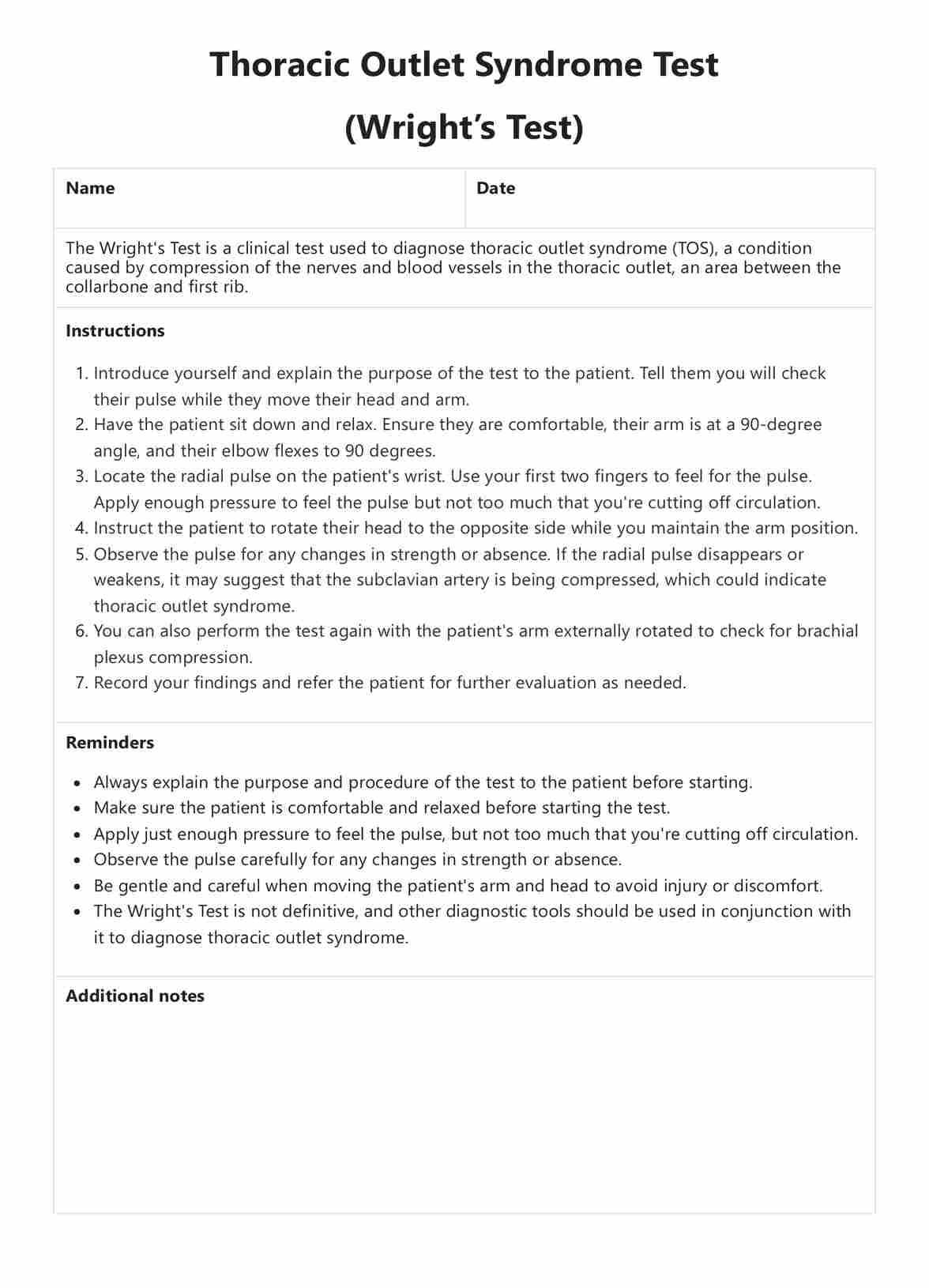This test doesn't have a scoring system but is designed to provide information about the signs and symptoms of thoracic outlet syndrome. You can use this information to further assess or diagnose your patient's condition.

Thoracic Outlet Syndrome Test
Learn more about Thoracic Outlet Syndrome Test and how it can be administered with our free PDF download.
Use Template
Thoracic Outlet Syndrome Test Template
Commonly asked questions
This Thoracic Outlet Syndrome Test lets you quickly assess or diagnose your patient's condition. It also helps you keep track of your patient's progress over time. This test can also help you determine if conservative treatment options are working or if more advanced treatments may be needed.
The Thoracic Outlet Syndrome Test looks for signs and symptoms that may indicate the presence of thoracic outlet syndrome.
EHR and practice management software
Get started for free
*No credit card required
Free
$0/usd
Unlimited clients
Telehealth
1GB of storage
Client portal text
Automated billing and online payments











